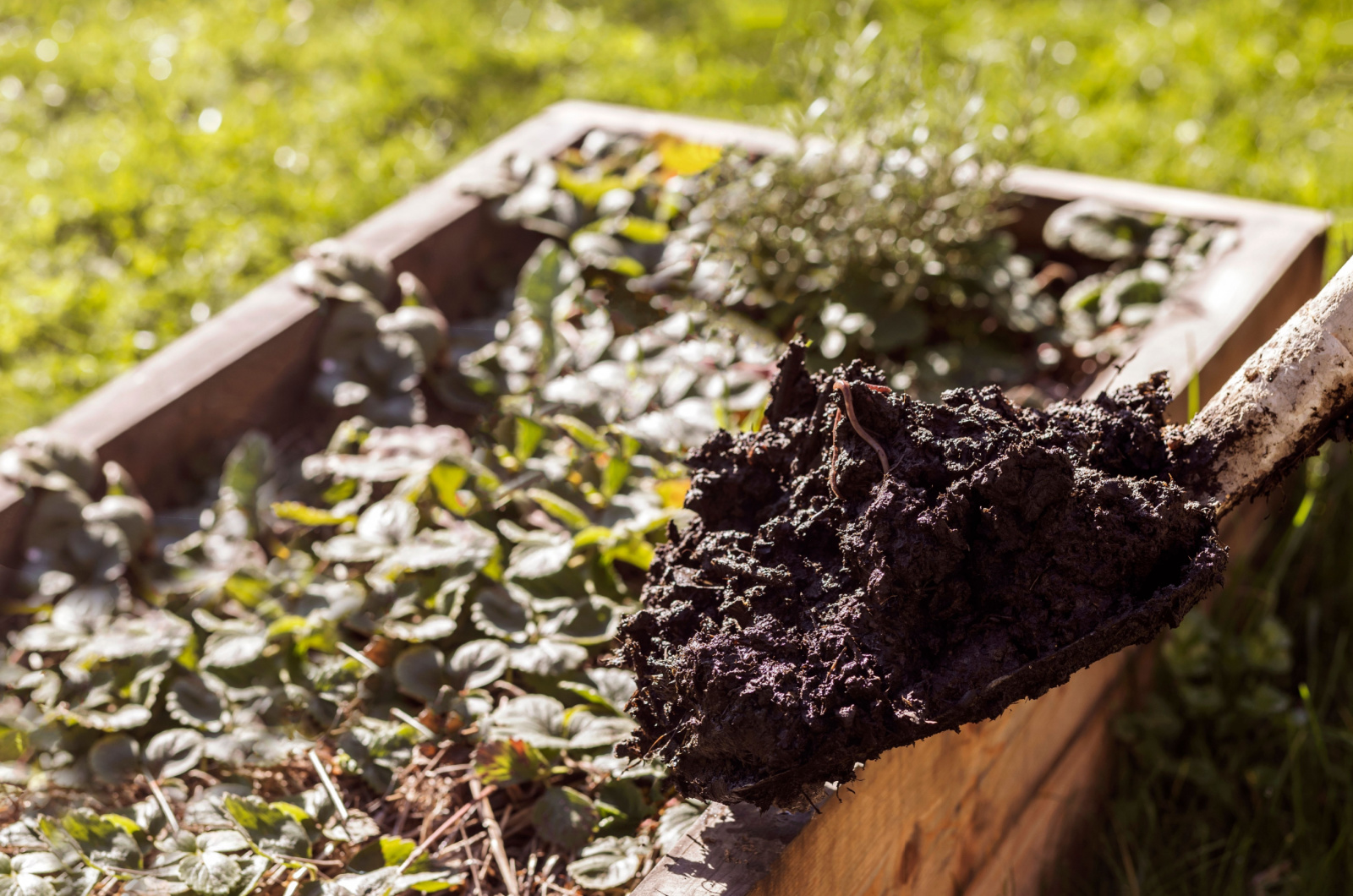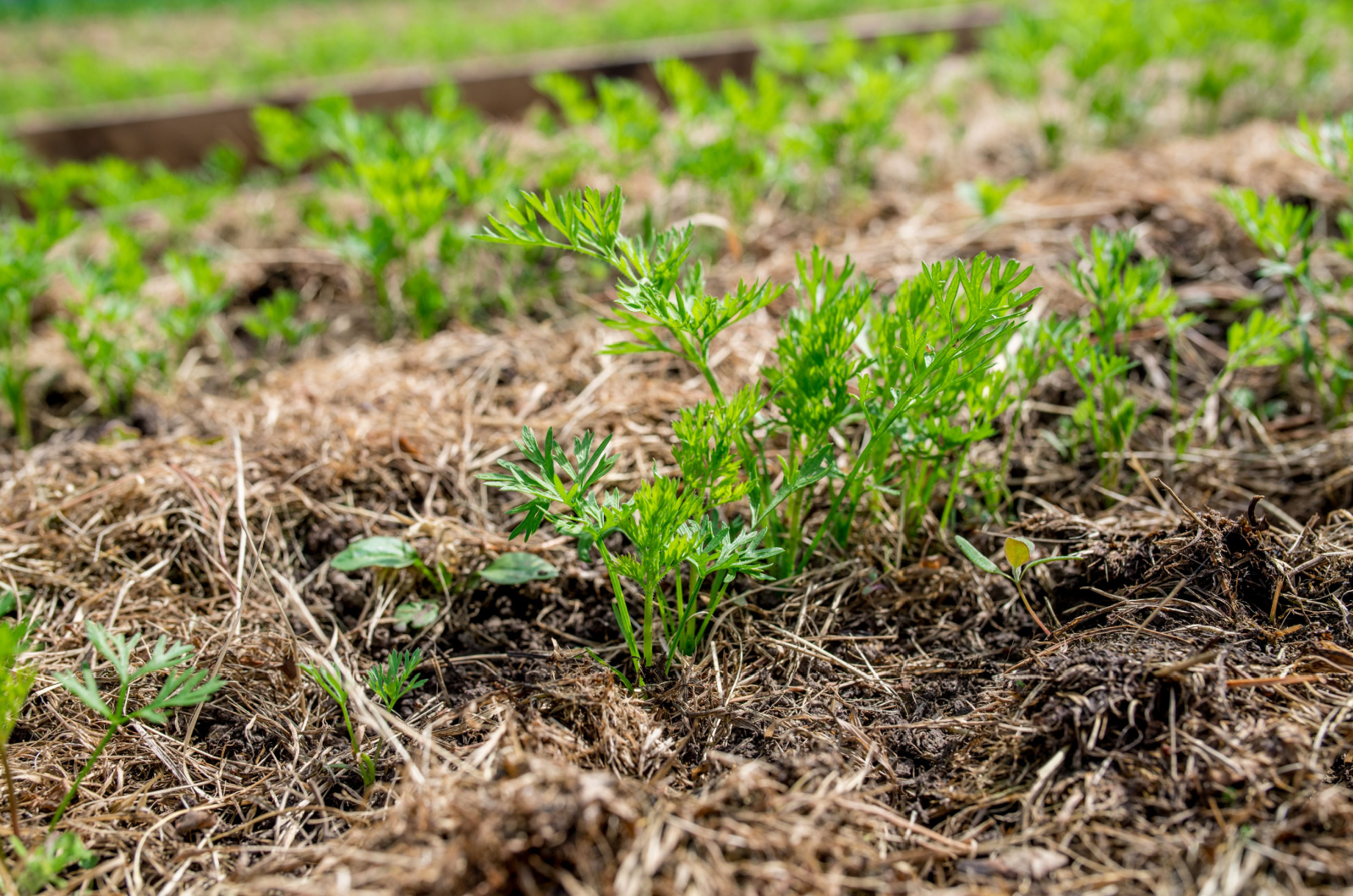At the beginning of the season, we prepare our raised beds by adding all the necessary nutrients for healthy plant growth. This ensures a bountiful harvest that typically ends in the fall.
But the raised bed soil becomes exhausted at this point because our veggies, herbs, or flowers have depleted all the nutrients. This is an entirely typical and expected scenario, but our gardening chores should not end here.
We should help our soil restore its energy in the fall instead of waiting for the next spring. Fortunately, this isn’t a hard task and you don’t have to be a master gardener to complete it.
I’ll show you 3 easy methods for how to rejuvenate raised bed soil, and explain all the benefits.
Let’s get started!
Method #1: It’s Time For A No-Till Cover Crop
I’ll start with the easiest, cheapest, and most efficient method: planting a no-till cover crop. These plants have actually been used for centuries to rejuvenate exhausted soils.
There are three major benefits of planting a no-till cover crop. The first one is protecting the soil from erosion that typically occurs during the winter months.
The second one is coating the soil in leaves to prevent weeds and weed seeds from developing.
The last benefit, and the one that matters most at this point, is restoring soil energy. The cover crops generate deep roots which will penetrate the soil and loosen it. Once these roots and leaves above the soil line die back, they’ll release the nutrients into the soil.
How Do Cover Crops Restore Soil Energy?
The soil loses its texture over time and has difficulty retaining moisture and nutrients. Even if we feed it and add water on a regular basis, we often don’t see any improvement.
This can be seen as the soil crying out for help because it can’t support the plant’s roots anymore. After your cover crops die back, their leaves and roots will release key nutrients. You should know that this is a frequent way to boost nitrogen levels in the soil.
It will also increase the calcium and phosphorus levels in the soil, and these are the two other essential nutrients for healthy plant development. The levels of trace minerals will also rise, resulting in a bountiful yield.
How To Plant Cover Crops
Here comes the best part! Planting these natural treasures is not time-consuming and is very simple. All you need to do is clean your raised bed by removing the old plants.
Carefully rake the surface of the soil until it’s smooth. Scatter your selected seeds and add a thin layer of mulch over them; ¼ inch will suffice!
Straw, grass clippings, and any other type of mulch will work perfectly for this purpose.
Guess what? That’s it! The only thing you need to do now is watch your cover crops grow.
There are some no-till cover crops, such as oats and peas, that die back during the winter on their own. Oats are rich in nutrients and will form a thick layer over the soil.
Peas, on the other hand, are a perfect choice for soils that lack nitrogen.
Once the spring arrives, you need to cut these plants down to the ground. You don’t even have to remove them from the soil; simply leave them and they’ll break down.
Some cover crops also make a perfect pollinator patch, so your raised beds will be weed-free, nutrient-rich, and full of energy!
Method #2: Layering In Compost
Another way to revitalize the soil in your raised beds is by adding compost to it. This is a fast and common way to improve garden soil – mainly its texture and nutritional value.
So, how do you apply this powerful ingredient to your raised bed? The first way is to add it over the surface of the raised bed soil; make sure the layer is no more than 2-3 inches thick.
The compost will gradually release energy over the winter months and your soil will be ready for spring planting.
Another way to add compost is by mixing it in the soil and then adding a cover crop. This will double the efficiency and your soil will be rejuvenated in no time!
Method #3: Using Grass Clippings And Shredded Leaves
Fall is the season when we have so many natural ingredients we can use to rejuvenate raised bed soil. The best examples are grass clippings and shredded leaves.
Grass clippings can be reused in different ways and are the perfect choice if your soil lacks nitrogen. Leaf mulch contains a lot of nutrients and will help your plants generate new and healthy growth.
A combination of these two materials will result in the perfect energy boost. A lawn mower or small shredder will help you get the desired texture that will decompose faster during the winter months.
Finally, the fastest and best way to rejuvenate your raised bed soil is by combining all three methods, if possible. First, mix compost into the soil, plant a cover crop, and finish by adding a layer of finely shredded grass clippings and leaves!
One thing is certain, by using any of these methods or a combo, your raised beds are destined to thrive in the next growing season!




